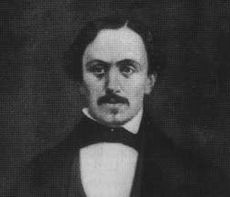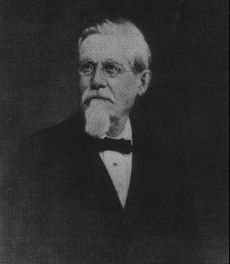Himno Nacional Mexicano facts for kids
| English: Mexican National Anthem | |
|---|---|
 |
|
| National anthem of | Mexico |
| Also known as | "Mexicanos, al grito de guerra" English: "Mexicans, at the cry of war" |
| Lyrics | Francisco González Bocanegra, 1853 |
| Music | Jaime Nunó, 1854 |
| Adopted | 4 May 1943 |
The Mexican National Anthem (also known as "Mexicans, at the cry of war") is the official song of Mexico. It was first used in 1854. The words of the anthem talk about Mexico's history and defending the country.
A poet named Francisco González Bocanegra wrote the lyrics in 1853. A year later, Jaime Nunó composed the music. The anthem has ten verses and a chorus. It became official on September 16, 1854.
Contents
How the Anthem Was Made
Writing the Lyrics

On November 12, 1853, Mexico's President, Antonio López de Santa Anna, announced a contest. He wanted someone to write a national anthem for Mexico. The winner would get a prize for the best patriotic poem.
Francisco González Bocanegra was a talented poet. But he wasn't interested in joining the contest. He felt that writing love poems was very different from writing an anthem. His fiancée, Guadalupe González del Pino, believed in his writing skills. She was upset that he kept refusing to enter.
So, she tricked him. She led him to a quiet room in her parents' house. Then she locked him inside! She told him he couldn't leave until he wrote something for the contest. Inside the room, there were pictures of Mexican history. These pictures helped him get ideas.
After four hours, Francisco slipped ten verses of his poem under the door. His fiancée and her father approved it. He submitted the poem and won the contest! Everyone voted for his work. Francisco was announced as the winner on February 3, 1854.
Composing the Music

At the same time, there was a contest to choose the music. The first winner was Juan Bottesini, but people didn't like his music. So, a second contest was held.
The music chosen for González's words was written by Jaime Nunó. He was from Catalonia, Spain, and was a band leader for the King of Spain. At the time of the contest, Nunó was leading several Mexican military bands. President Santa Anna had invited him to Mexico.
Nunó's music for the anthem was very well-composed, like famous classical music. His music, called "God and Freedom," won on August 12, 1854. The song officially became the Mexican national anthem on Independence Day, September 16, 1854. The first performance was led by Juan Bottesini. It was sung by Claudia Florenti and Lorenzo Salvi at the Santa Anna Theatre.
Anthem Lyrics
Official Lyrics Today
Since 1943, the official Mexican National Anthem includes the chorus and specific verses. These are the first, fifth, sixth, and tenth verses. The chorus is sung after each verse and again at the end. President Manuel Ávila Camacho ordered this change.
When the anthem is played at sports events, like the Olympic Games or FIFA World Cup, a shorter version is used. This version includes the chorus, the first verse, and then the chorus again.
| English translation |
|---|
|
Chorus: |
Anthem Rules
Mexico has a special law called the "Law on the National Arms, Flag, and Anthem." This law explains how to respect and use the national anthem.
- The law says that the anthem must always be performed in a respectful way.
- It is against the law to change the anthem in any way.
- You cannot sing or play the anthem for commercials or to promote something.
- You also need special permission to play other countries' anthems in Mexico.
- On TV and radio, the anthem is usually played around midnight or 6 a.m. Pictures of the Mexican flag must be shown on TV when the anthem plays.
- The anthem can only be used for official events. These include civic, cultural, school, or sports events. It is also played to honor the Mexican flag and the President.
- When a choir sings the anthem, military bands must be quiet.
- Anyone watching the anthem being performed must stand still and remove their hats.
- Children in pre-school, primary, and secondary school must learn the anthem. Schools are asked to sing it every year.
- If another country's anthem is played at an official ceremony, the Mexican anthem is played first.
- Mexican embassies and consulates abroad also play the anthem at special events. They need permission from the government to play it outside Mexico.
Cultural Importance
When the Mexican national anthem was written, Mexico had just lost a war with the United States. The country felt sad and divided. More than half of its land was lost.
Historian Javier Garciadiego said that the anthem helps bring people together. It encourages national unity. In 2004, on the anthem's 150th anniversary, people across Mexico sang the anthem. Mexicans living in other countries also joined in. The anthem is seen as a very important part of "Mexican identity."
Sometimes, if someone sings the anthem incorrectly, the government can fine them. This is to make sure the national symbols are treated with respect. For example, a singer forgot some words at a football match. She had to pay a fine and apologize.
The anthem is sometimes used to check if someone is truly Mexican. Police might ask people to sing it to prove their nationality. In one case, police in Japan asked four men to sing the anthem. They couldn't, and it turned out they were Colombians with fake Mexican passports.
Other Languages
While Spanish is the main language in Mexico, many people speak indigenous languages. In 2005, a law was passed to allow the anthem to be translated into these native languages. The National Institute of Indigenous Languages does the official translations.
The anthem has been officially translated into languages like Chinanteco, Hña Hñu, Mixtec, Maya, Nahuatl, and Tenek. Other groups have also translated it, but these versions are not yet official.
Nahuatl Lyrics
Ihcuca yaotl tenochnotzas mexihca
ticanacan temicti tepuztli
ihuan huelihqui ma tlacohcomoni
ihcuac totepuz cueponiz nohuian
Tlazohtlalnan ximoixcuaxochtlali
in pahcayotl nemiliztli cecnitlaca,
ilhuicapa monemiliz nochipa
omohcuilo ica imahpiltzin toteo.
Tlaquinequizque in huehca chanehque
motlalticpac quintlalizque in icxihuan
tlazohtlalnan xicmati ca mopilhuan
quin yecanaz toteotzin ipan yaotl.
Yaotl yaotl in aquin yaotenchuaz
quin tlilehuaz in tlazohilalan,
yaotl yaotl in tlazohtlalnan pantli
ma paltilo ihtech xalatlyezpozonal.
Yaotl yaotl ipan ixtlahual in cuactla
ihcuac mocaquiz temictiani tepuztli,
inanhquilo in tlaototoponal
tlamach tzatziloz nemaquixtiliz
Achto tiquin mopilhuan tazohtlalnan
cuatlanepantetech iquechpa motemahca
mamoyeznalocan in tlen ixtlahuahme,
ihpan eztli icxihuan quintlaliz
Ihuan moteocalhuan, hueicalhuan tzilinal
mahuetzican ica tlalcocomonal
ihuan cemihcac quitozqui in tapanzol
miac mahuiztli oyeni tlazohtlalnan.
Tlazontlalnan mopilhuan mitzilhuia
ca nochipa mopampa mihmiquizque
tla technotzaz in yaoltlapitzalli
ica itenyo huclihqui quemhmanian.
Inic tehuatl iztaque xochime
inic yehuan ce ilhuica ilnamiquiliz
cente tlatzaca tlatlaniliz moaxca
ce mahuiztic tecochtli inic yeh.
Ihcuac yaotl tenochtzaz mexihca
ticanacan temicti tepuztli
ihuan huelihqui ma tlalcohcomoni
ihcuac totepuz cueponiz nohuian.
Images for kids
See also
 In Spanish: Himno Nacional Mexicano para niños
In Spanish: Himno Nacional Mexicano para niños



